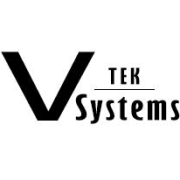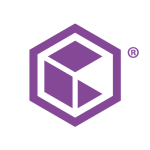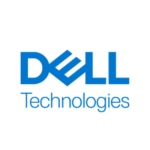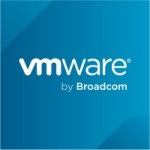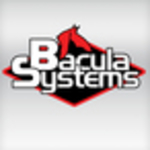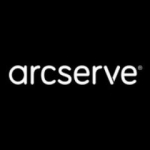What is our primary use case?
We are an IT support company, so we resell IT and support services. It is our customers who have installations of disaster recovery appliances and cloud backup solutions.
We are our customer's IT support company. We are the ones who implement and support it. Our customer pays the bill, but we do all the support, looking after it. I do not back my own data up on Infrascale, but I definitely back up my customers' data.
We sell and support two products for our customers. We have four disaster recovery appliances onsite that then back up to the cloud from the appliance. We also have quite a few people on just the cloud backup. So, we use cloud backup and DRasS, which is disaster recovery as a service.
When there is an appliance-type installation, which is a physical hardware installation, we go to the site and install a piece of hardware. That piece of hardware communicates with their servers onsite. Their servers are hosts with virtual servers built onto them. The complete virtual machine is backed up maybe twice or three times daily to the hardware appliance provided by Infrascale. That could then become a replacement for the server, if the server had a physical problem and needed to be shut down. We can turn the physical server off onsite, go to the appliance provided by Infrascale, boot up the virtual machine on the appliance, and then it would run the business as if the server were still running. So, it is hardware redundancy for the server.
It backs up the virtual machines, backing them up and all the files. So, it can be a data recovery tool as well. Also, if the entire building burnt down, we could jump onto the version in the cloud, boot that up, and people from all around the world could log into that server to carry on working.
Imagine an appliance, similar to installing a second server, that backs up a virtual machine to the appliance. It has disk space on the appliance, then it backs up that virtual machine from the appliance to the cloud. Our cloud is based in the UK, which is also provisioned by Infrascale. So, we implement that sort of system, which is a little bit like SaaS, but it is a disaster recovery solution. We also have cloud backup, which is a software installation to a server, that then backs up certain files and folders through a cloud provision somewhere in the world.
We are the actual customer because we sign for these products, and our customer doesn't. We are the actual people who lease these things from them.
How has it helped my organization?
Now, if one of our businesses has an issue, I am confident that we would be able to get them booted and running within a couple of hours. It would affect their business, but it is a disaster recovery scenario, so there has obviously been a disaster.
What is most valuable?
The recovery of data is the most valuable feature. The software backup, which is just a program that gets installed on a server, can back up to the cloud. You can install that on a server or PC, and that will simply back up a user's files and folders. If it is installed on the server, we just back up the relevant data. Recovering that, if there has been a malicious attack on a business or anything like that, has been invaluable in the past. The good features about that are obviously, if the physical hardware has a problem, then we can utilize the appliance, turn on the virtual machine, and carry on running the business while we put the hardware back and correct the issue.
The Boot Verification feature gives you a snapshot picture to tell you what would happen if a virtual machine was booted. From that, you can tell whether the backup was successful.
I find the dashboard fairly straightforward. It is fairly in-depth from day one. The more you use it, the more you get used to it. I find it fairly straightforward now for making some limited changes that won't really cause any problems. It has a good user interface.
The speed of the solution’s restore functionality is very quick. It works a treat and does the job perfectly. I don't think we have ever come to the point of thinking the product isn't quick.
What needs improvement?
We did have a major problem last year in March. Somebody attacked some servers being supported by Infrascale and managed to wipe the servers as well as wiping the appliance. However, they didn't manage to wipe the cloud. So, what was on the cloud had to be downloaded to the appliance again. The customer was probably down for about three days. This was a very difficult situation for us to be in.
I think somebody had accessed the server, could get onto the appliance, and see what it was because we had saved the password. Now, I know better than to save the password. Also, the password was still the default password. With the new implementation, it makes you change the password so you can't keep the default password. However, four years ago, when we implemented it, the default password was still on that appliance when that appliance got wiped by somebody.
While this would be a very worst-case scenario, I don't blame Infrascale for the amount of time that it took. However, it was difficult for us because we were trying to placate our customer, which was difficult, because they have a 25 million pound turnover business. They were not happy, but we are still working with them.
I think I'd be more confident now dealing with the problem. Plus, we monitor the systems more closely. Whereas, previously, I presumed that everything was going well without really checking. Now, I have learned that I need to be on top of any issues. So, I am checking the appliances and cloud solution backups daily. So, we are a bit better switched on with supporting it.
When you are ordering hardware appliances, they have to be delivered from America. In the past, hard drives on the appliance have been simple SSD drives that are installed. However, they don't have a local supply for the SSD drives in the UK. They have to be exported from the US, arrive, and then I have to go and install them. Then, they will rebuild it from their side of things. However, I could order that same SSD drive online and get it the next day. So, I have to wait days for things to come when I could get the exact same drive the next day in the UK, if I wanted to. That causes a bit of a problem. I don't know how many businesses they have in the UK, but I do think that having to import stuff from the US is a time-consuming problem. If there was a holding in the UK, then we wouldn't have that delay in time.
When they export stuff to me from the US, invariably the delivery company (called DHL) is looking for EORI numbers that we don't have. So, they try to involve us in the export of it, and it has nothing at all to do with us. We are simply the customer. If I had to moan about anything, that would be it.
Where the dashboard is concerned, I am okay with it. I am looking at one now and understand what I am looking at. When you first get in it is difficult, but I do believe that they now offer certain training for it. Given the fact that we are trying to support our customers in the UK, it is good to have the knowledge about it, know what you are looking at, see what the size of the protected bytes are, and understand it a little bit better. I have been doing IT support for implementations for the best part of 30 years, and it took me a bit of time to get my head around some of the way things are done.
For how long have I used the solution?
I have been using Infrascale for over four years, since April 2017.
What do I think about the stability of the solution?
It is very stable. I have never had any problems with the software. If we install the software on anything, it does what it says on the tin, which is that it will run a backup at a certain time.
There are some issues with the software backup. Those issues are it cannot back up from an installation onto a server nor can it back up redirected folders on a server. Because when you install the software onto the server. you are installing it as an administrator on the server. However, an administrator account on a server does not have access to a user's redirected folders.
The user is actually the owner of that folder on the server, even the administrator can't break into that. While you can force your way in, it basically breaks the policy, so we don't try to do that. If we had to, we could. However, out-of-the-box, installing software onto a server, it does not back up people's redirected folders. Now, if you are a user that saves a lot of files and folders onto their desktop, you get redirected back to the server. Essentially, you are missing quite a bit of data to be backed up. So, we do get a lot of errors based on that. We have found a little bit of a workaround. However, that workaround doesn't always work either, causing problems.
I check daily that the backups have gone through. If the backups aren't working correctly, I log onto the appliances and check why the appliances haven't backed up correctly. If it is something that I don't quite understand, then I will pass that down to the support at Infrascale. Where the appliance and cloud backup are concerned, there is very little maintenance to do.
What do I think about the scalability of the solution?
We have had problems with this. Again, this is down to us not really understanding the product in the first place. In the case of the company, where we had problems with last year, when it came to bringing the VMs onto the appliance, we had to download them from the cloud. We got the VMs back onto the appliance, then we found that trying to boot them and the hardware was insufficient to support their product. So, the product ran like a dog when it was booted up on the appliance. So, it was unusable for the customer. That was down to us. When we were trying to size the product, it was a misunderstanding of, "What would be the minimum that would allow this server to run?" Well, we know that the minimum a server will run on is 8 GB. However, when the customer's product is on there, 8 GB is insufficient to run the server. So, it caused some problems.
One of our companies, who has had the product for three years, is at the point where I don't think the appliance has now got enough space to back up what they have. The only way that we can do anything with it is to keep getting rid of backups, which we probably shouldn't do, but that is what we are going through at the moment. So, we have to really micromanage the backup that is happening so it doesn't go over. The customer could upgrade it, but our customer isn't realistically going to put his hand in his pocket and pay any more at the moment.
For all the people that we have on it, we have six terabytes of space in the cloud for the cloud backup solution as well as four appliances. I am the one who looks after all of it. I monitor it, and if there is a problems, then I deal with it. The guys who work for us run the IT support side of things, and I look after the backup side of things.
We have a couple of thousand endpoints. We are quite a small IT support company.
How are customer service and support?
I am perfectly happy with the support that I receive from Infrascale. The technical support is very good. I deal mostly with one guy there called Maxim. He understands what the issues are and is very helpful. I mostly deal with one guy there, who is fantastic.
They work in the Ukraine, so there is a little bit of a language barrier. When we first started working with them, I found it very slow to get my message across. Things have improved. What they have done is given a certain person for me to always deal with, which suits me and I'm happy with that. You develop a bond with the person and know that they understand your systems. Previously, when we first started, we could get anybody. Then, we would have to go through the same process of explaining things all over again. To start with, it was like pulling your own teeth out, but now it's improved.
They are proactive to the point that Maxim will check my system. If he sees something he will log a call with his own support desk. He phoned me up the other day, and I said, "Hello Max, how are you doing?" He said, "Yeah, good." I said, "I've seen a ticket was logged, but I haven't logged it." He said, "No, I logged it for you. Because I noticed something was getting high, and I wanted to have a chat with you about it." That is great, because that is proactive monitoring.
When we first started to do the appliances, I really didn't understand what the service was. I thought it was a managed service for backups. I didn't realize that it would be me who would be managing it. But, the more I have been involved in it, the more I have become accustomed to managing all of its appliances and installations. I take the responsibility for making sure that it works. Support-wise, it has improved. I have seen the business improve over the last 12 months. I think the business got sold or bought out. However, there have definitely been recent improvements with the support.
If I am ever going to do anything that I think is outside of my remit, I will contact support and go through one of their support guys.
Nobody from Infrascale has ever phoned me up and said that they want to test anything.
Which solution did I use previously and why did I switch?
We used Veeam Backup. Mostly, we would use Windows Backup to USB drives.
I switched to Infrascale because I wanted a solution that gave me what I was looking for. Backing up to the cloud directly from your server causes slowdown. I wanted something that would allow me to have an item onsite where we could quickly back up, then slowly back it up as needed for it to be in the cloud, as long as it did the job. I checked online, had a look at what customers were using, and read through some stuff for Infrascale. It just clicked that it seemed to have what I was looking for. So, I contacted them and never had a problem. I did the due diligence myself, so I am happy with it.
How was the initial setup?
Now, the initial setup is simple. Years ago, when we first started, it wasn't simple.
I installed an appliance yesterday and had it installed within an hour. From the box to the customer's site, it was installed and ready for the next stage. Then, one of the implementation guys from Infrascale gave me a call, and we liaised with each other because they like us to set it up.
They tell me what they would like me to do. Now, the setup is much easier than it was when I very first had an appliance. It seemed to take forever when I first had an appliance. However, yesterday when I did it, it took no longer than an hour.
Because I have implemented these a few times now, I have a bit of knowledge based on some of the things that you come up against when it comes to making it all work exactly the way you want. There were things yesterday that I knew we should check to make sure it was working, because a couple of the backups failed to start. I actually told the guy at the other end, "Let's try this." So, we tried something and made it work because of the knowledge that I have built up. It is a lot easier than what it used to be, because it used to be difficult. Now, out-of-the-box, it is fairly easy.
When we install a hardware server, we build that hardware server with virtual machines on it. The hardware physical server would be clustered at the host with Hyper-V installed on it. Then, we would build the virtual machines on it, and those virtual machines are essentially the servers that are onsite. For customers of a certain size, we wouldn't suggest this because it is quite expensive for our customers per month. It is a fairly expensive product. However, for customers of a certain turnover, we would suggest this. We would explain to them in full what the disaster recovery solution offers. What we say to our customer is, "Our backup strategy would be to backup between two and three times a day, which would be before business starts, as business ends, and during business hours." So, any one of those would be bootable and the files are recoverable from three sections of each day. So, that is our backup strategy, which is really based on the appliance.
What about the implementation team?
I help with the implementation. In fact, I implemented one yesterday with some of the guys. Sergei is the implementation guy. So, we did an implementation of an appliance yesterday. I do a lot of the support for my customer, utilizing the support services of Infrascale. I deal with a guy called Maxim on a lot of cases. I deal with it directly with the guys at InfraScale.
They have never physically tested any of our systems. Infrascale has never tested anything. I have never had a phone call with them to say, "We want to run some tests on something." We have installed the stuff, but they have never tested it. There are no tests.
What was our ROI?
I make sure that this all works. While it does cost a lot of money, it is a good service. I am well bought into what it can do, because as much as it protects the customer, it protects me as well. If we had not had this solution 12 months ago, then the company that we support would no longer want us to work with them, because they would have nothing at all. So, it saved us.
What's my experience with pricing, setup cost, and licensing?
We pay 600 pounds per month for six terabytes of cloud storage and backup. This is a fixed cost of 100 pounds per terabyte.
We pay 752.50 pounds for two appliances, one of them costs 301 pounds per month and the other one costs 451.50 pounds per month.
Another appliance costs us 327.60 pounds.
The newest appliance that we installed yesterday is costing us 511 pounds per month because it has better speed and memory.
The appliances have different prices because of storage, size, and memory. For example, the older machines support more virtual machines, whereas the new one only supports one virtual machine. As we have purchased the later appliances, they have probably been a little bit more expensive because they have to be good enough to keep the business running if the physical server goes down. We learned our lesson from the one that went down when we tried to run products and it wasn't quick enough.
What other advice do I have?
I push it in my own business. I wouldn't do that if I didn't think it was any good. I would definitely advise others that it is a good product.
If you want to back up redirected profiles on a server, you have to go into the scheduler and change the event in there to be a system event, and not run it as an administrator. That is the best thing that I learned, because that enables you to back up redirected folders. However, if you sign up for Infrascale, even they don't know that. So, you can get it to work, but it takes a bit of messing about to do it. If I had to say to somebody, "Get Infrascale, put it on your server, you can back the data up, and then you can back up the user profiles. You will need to go into the scheduler and change it for the task to run as a system event, and not as with administrator rights. It has to run as a system, and it will then work."
The speed of Infrascale’s backup functionality is good. I have had no complaints. The speed of backing up to the cloud using the software solution is based on the speed of the server at one end, how quick it can run the program, and the upload speed of the site. Realistically, that has nothing to do with the solution provided by Infrascale. Where the appliance is concerned, because the virtual machine is backed up to the appliance, there is no lag on the servers from the appliance, which then backs up to the cloud. That is based on the speed of the customer's bandwidth, because that is how it gets into the cloud. Solution-wise, I think the speed of it is just fine.
The speed of recovered documents is more based on a customer's broadband.
After a few weeks, anyone working with Infrascale should really understand the product, and it should be fairly straightforward.
We offer it to all our customers. It depends on whether they are prepared to spend any extra money on the solution. So, any new customer who comes onto us, we suggest that they have an offsite cloud data backup that will protect their data only in the cloud. Then, should anything happen, it's recoverable to a drive and we would be able to give it back to them. Backup is a service, and it's also something that they can do themselves locally. We do try and get as many customers onto it as possible because it helps us.
There is a slight language problem. It is a bit hard for people to initially get used to, because support is in the Ukraine. I think the language barrier would mark it down one point, but it is a nine out of 10 for me.
Disclosure: PeerSpot contacted the reviewer to collect the review and to validate authenticity. The reviewer was referred by the vendor, but the review is not subject to editing or approval by the vendor.


